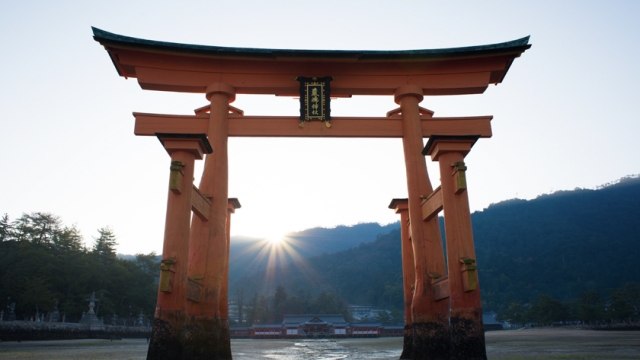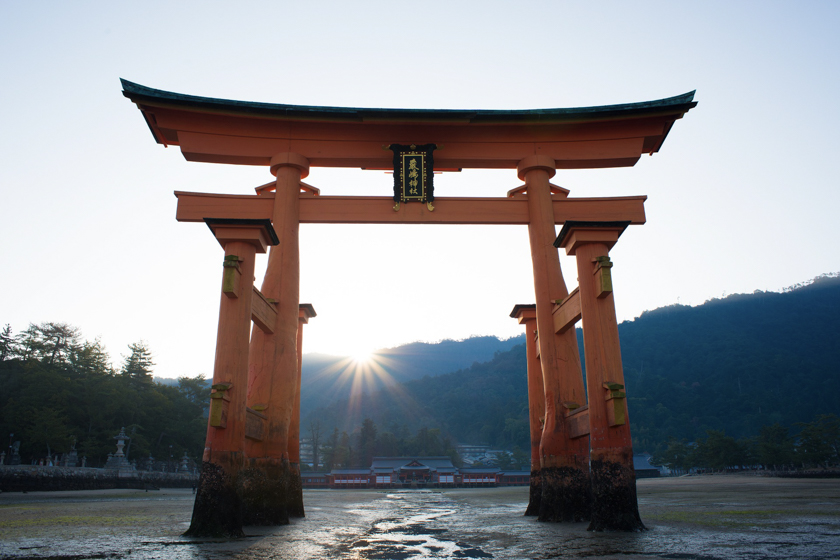In the heart of Japan lies a profound connection to nature and spirituality, intricately woven into the fabric of its cultural landscape. Shinto shrines, or jinja, stand as testament to this sacred relationship, inviting both locals and travelers to experience their serene beauty and deep-rooted traditions. Each shrine, whether nestled in the lush woods, perched atop a mountain, or facing the tranquil sea, tells a unique story, echoing the whispers of the kami, the spirits revered in Shinto belief.
Exploring these shrines is like stepping into a living tapestry of history, art, and devotion. From the iconic torii gates that mark the entrance to a world imbued with spiritual significance, to the intricate rituals performed by priests, every corner of a Shinto shrine radiates a sense of peace and respect for the divine. As we delve deeper into the sacred beauty of these sites, we unveil not only their architectural marvels but also the profound philosophy that shapes the Japanese way of life, reminding us of the delicate balance between humanity and nature.
History of Shinto Shrines
Shinto shrines in Japan have a rich and complex history that traces back to ancient times. The belief system of Shinto is deeply intertwined with the natural world and the veneration of kami, or spirits. The origin of shrines can be found in the early practices of animism and the worship of nature, where sacred sites were marked by natural features such as trees, rocks, and springs. As these practices evolved, the first formal shrines began to emerge, dedicated to specific kami and providing places for communal worship.
During the Yamato period, which began in the third century, Shinto shrines became increasingly organized. The imperial family embraced Shinto as a state religion, leading to the construction of prominent shrines like Ise Jingu, dedicated to the sun goddess Amaterasu. This period solidified the role of shrines in Japanese culture, serving not only as religious centers but also as symbols of national identity. The architectural style of these early shrines reflected simplicity and harmony with nature, aligning with the Shinto principle that emphasizes purity and a connection to the divine.
The Edo period brought further development and proliferation of shrines across Japan. As the population grew and urban centers flourished, local kami were honored with newly built shrines, catering to the spiritual needs of the increasing populace. This era also saw the codification and spread of Shinto rituals and beliefs through the establishment of shrines as community hubs. Today, Shinto shrines in Japan continue to be vital spaces for cultural expression, rituals, and seasonal festivals, preserving the sacred beauty and traditions of the past.
Architectural Features
Shinto shrines in Japan are renowned for their distinct architectural styles which beautifully merge with the natural surroundings. The designs often incorporate natural materials, especially wood, and emphasize simplicity and elegance. One of the most recognizable features is the torii gate, which marks the entrance to a sacred space, symbolizing the transition from the mundane to the divine. This structure varies in style and color, with vermilion being a popular choice, as it serves both aesthetic and spiritual purposes, believed to ward off evil spirits.
The main sanctuary, or honden, is where the kami, or spirits, are enshrined. The architectural style of the honden can vary significantly depending on the shrine’s location and historical context. Common styles include the nagare-zukuri, characterized by its curved roof, and the kasuga-zukuri, featuring a thatched roof. These structures are often elevated off the ground on stilts, a practice rooted in ancient Japanese beliefs that promotes cleanliness and keeps the sacred space separate from the earthly realm.
Get A Quote
In addition to the honden, shrines often feature secondary buildings such as the haiden, or worship hall, where visitors can offer prayers and make offerings. These spaces are typically adorned with intricate carvings and vibrant paintings, reflecting the artistic heritage of Japan. The harmony of nature, craftsmanship, and spirituality in shinto shrines creates an atmosphere that invites contemplation and connection with the divine.
Cultural Significance
Shinto shrines in Japan represent more than just places of worship; they are vital components of the country’s cultural heritage and identity. Each shrine embodies the unique history and traditions of its community, serving as a focal point for rituals and festivals that celebrate the changing seasons and agricultural cycles. These celebrations often bring together people from surrounding areas, fostering a sense of unity and communal spirit while reinforcing local customs and beliefs.
The architectural features of Shinto shrines also hold deep cultural meaning. The torii gate, often the first element visitors encounter, signifies the transition from the mundane to the sacred. The design of the shrines emphasizes harmony with nature, reflecting the belief in kami, or spirits, that inhabit the natural world. This connection to the environment is a fundamental aspect of Japanese culture, highlighting the reverence for nature that permeates everyday life.
Furthermore, Shinto shrines function as repositories of art and craftsmanship, showcasing the skills of artisans throughout history. From the intricate woodwork to the carefully maintained gardens, each shrine is a testament to the dedication of those who have preserved these sacred spaces. This artistic significance not only adds to the spiritual atmosphere but also enhances the cultural landscape of Japan, making shrines important sites for both reflection and appreciation of the nation’s artistic heritage.
Visiting the Shrines
To fully appreciate the beauty of Shinto shrines in Japan, it is essential to immerse yourself in the serene environment that surrounds these sacred spaces. As you approach a shrine, take a moment to notice the torii gate that marks the entrance, symbolizing the transition from the mundane to the sacred. The carefully landscaped grounds, often adorned with lush trees, tranquil ponds, and stone lanterns, create a peaceful atmosphere conducive to reflection and reverence. Walking along the path to the main hall, you may feel a sense of calm wash over you, a reminder of the rich cultural heritage that these shrines embody.
When visiting a Shinto shrine, it is customary to participate in the rituals that honor the kami, or spirits. This often begins with a purification process known as temizu, where visitors wash their hands and mouths at a chozuya, a water basin located at the entrance. After this cleansing, you can approach the main shrine, offering a bow or clap your hands to attract the attention of the kami. It is a profound experience that connects you to the ancient beliefs and practices of the Japanese people, encouraging introspection and respect for nature and spirituality.
Photography is common at many shrines, but it is essential to remain aware of your surroundings and the rituals taking place. Each shrine has its unique charm, often highlighted by seasonal changes. In spring, cherry blossoms may frame the shrine, while autumn brings vibrant hues of red and gold. Engage with the local traditions, whether it is purchasing an omamori for protection or participating in a seasonal festival. Each visit to a Shinto shrine is an opportunity to pause, reflect, and embrace the sacred beauty that Japan has to offer.



